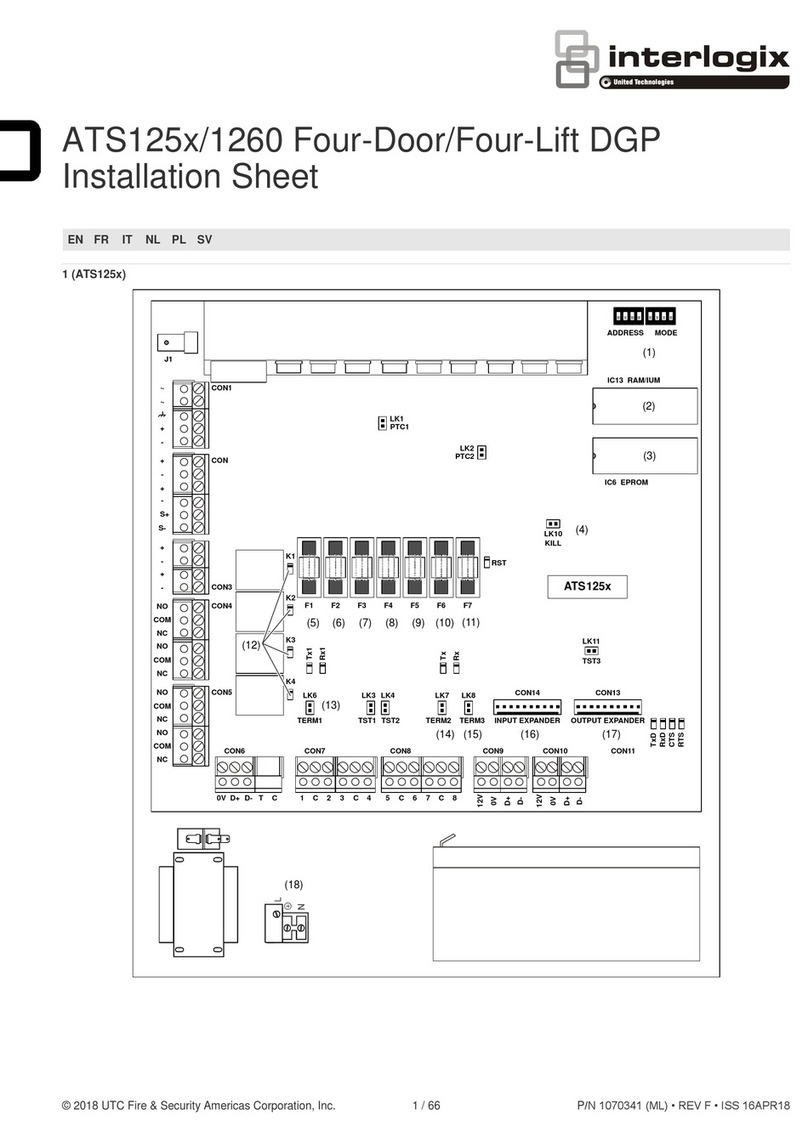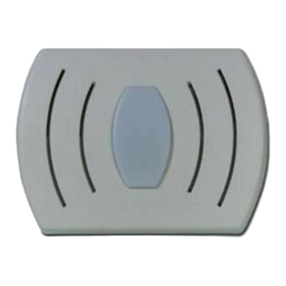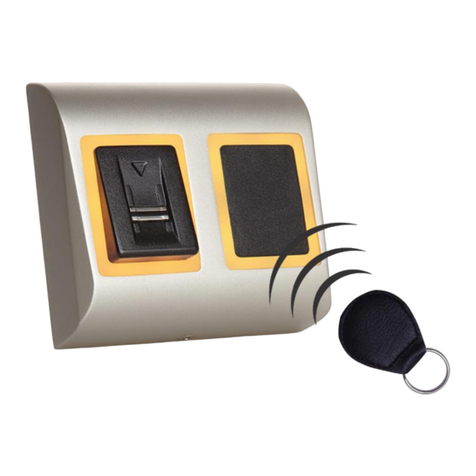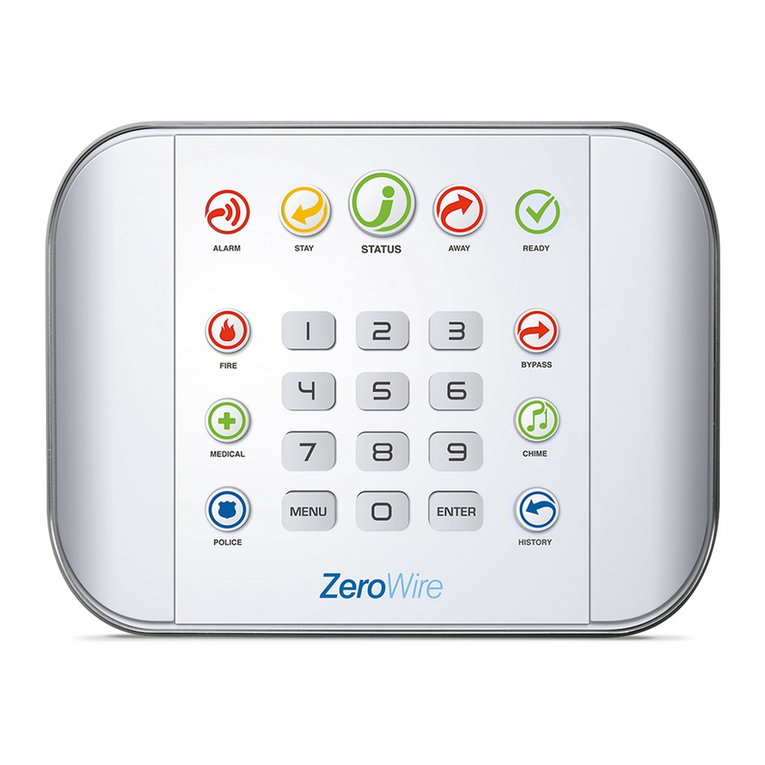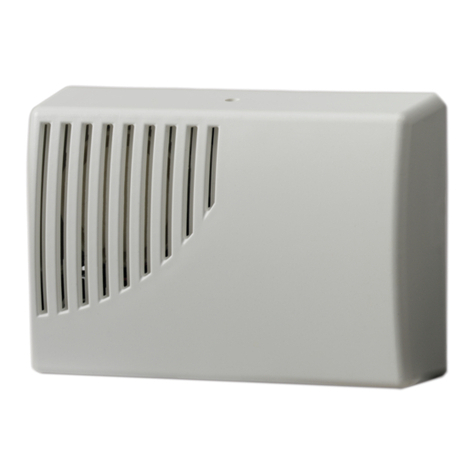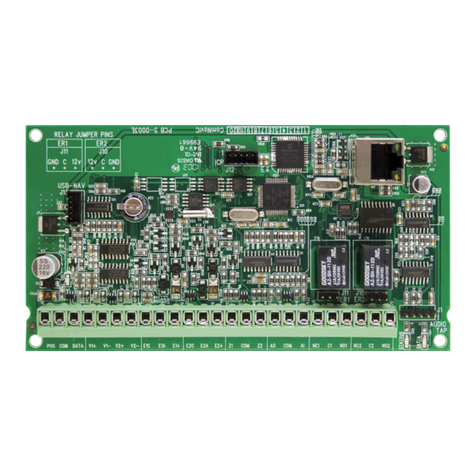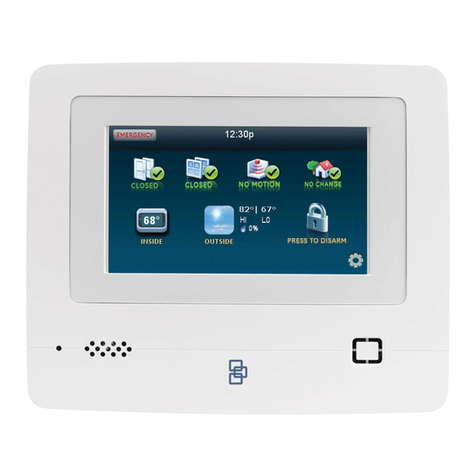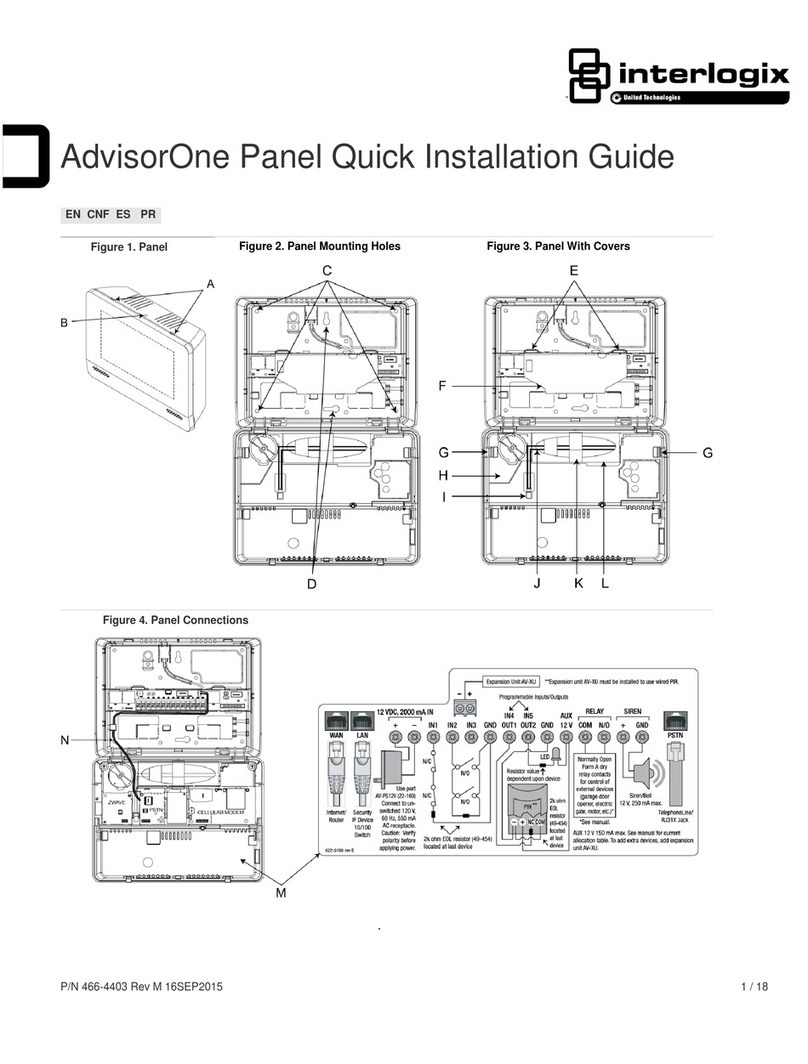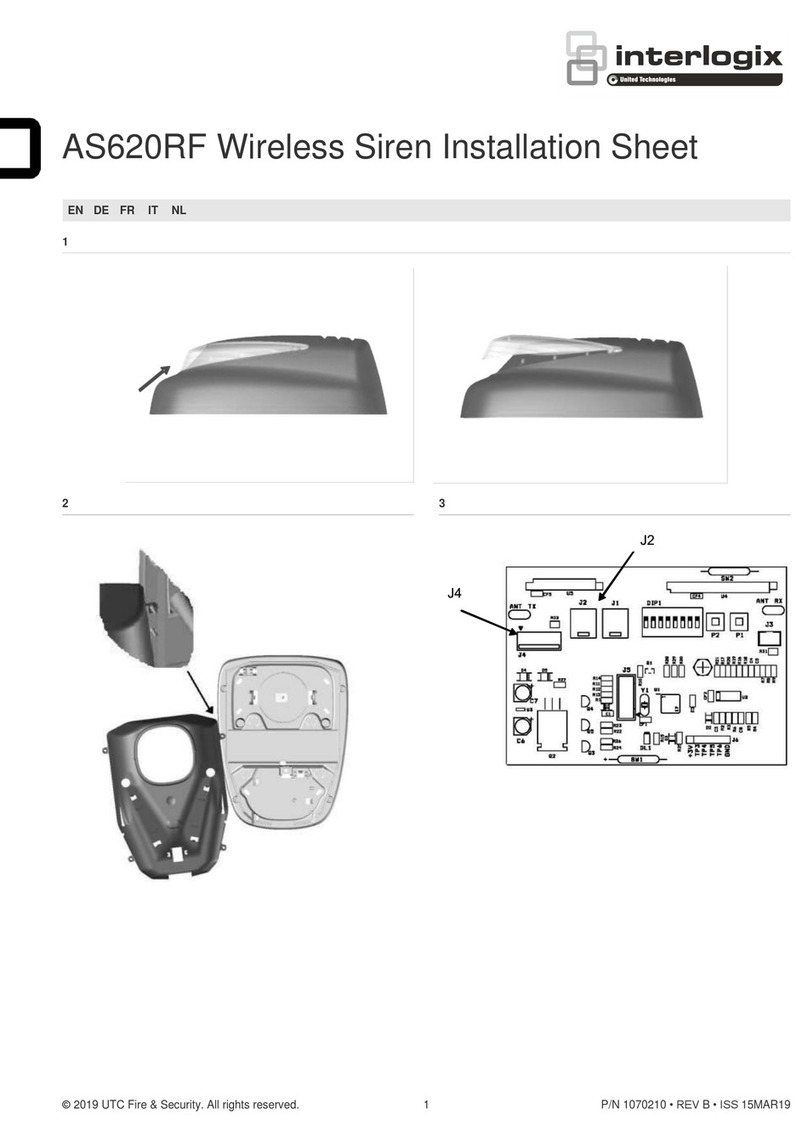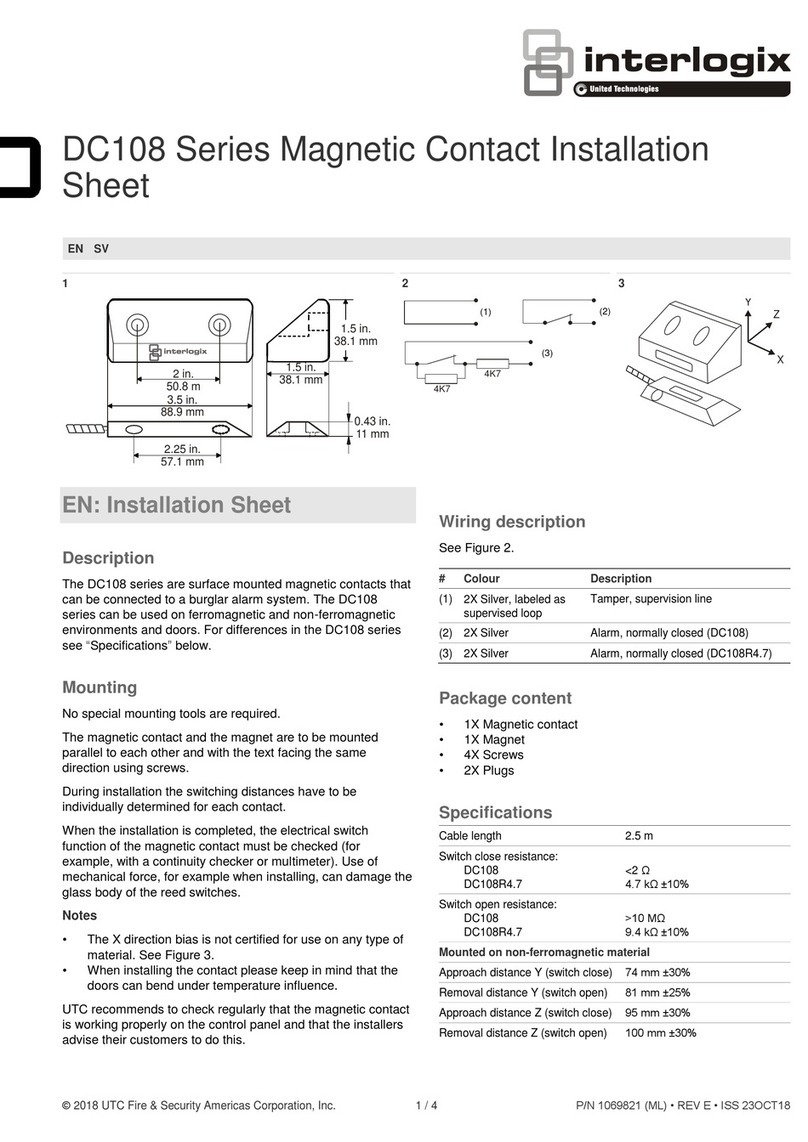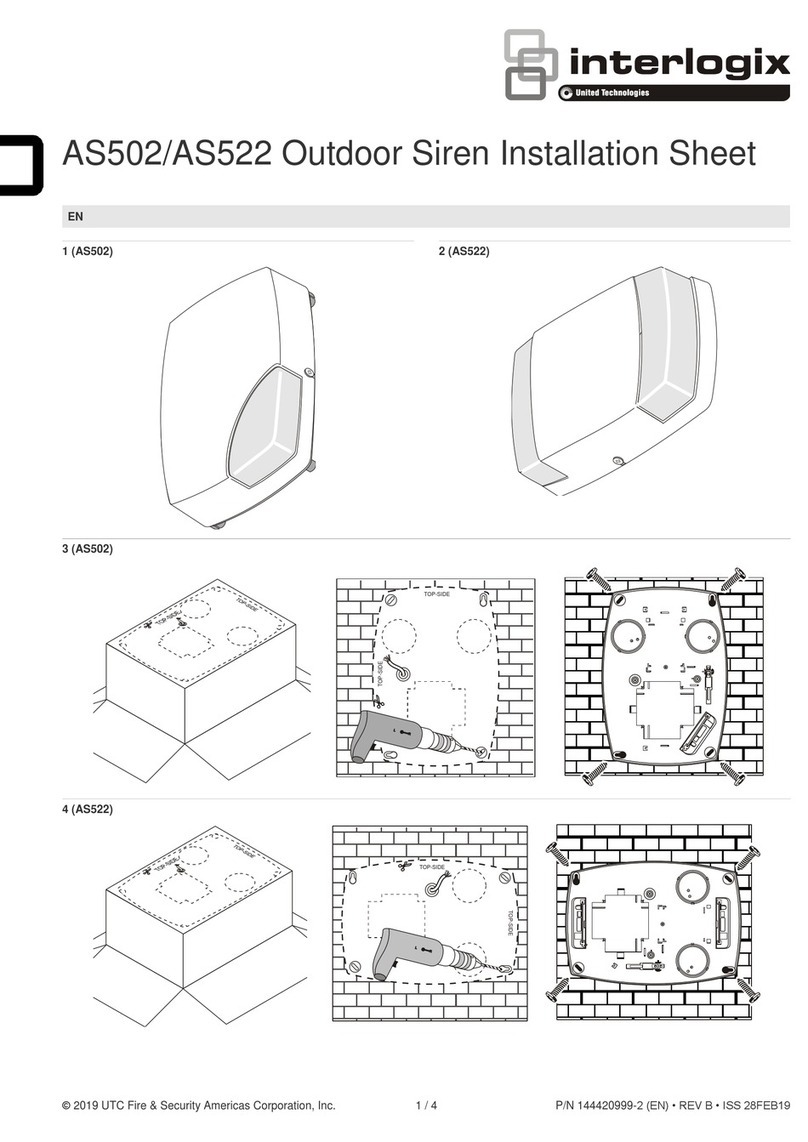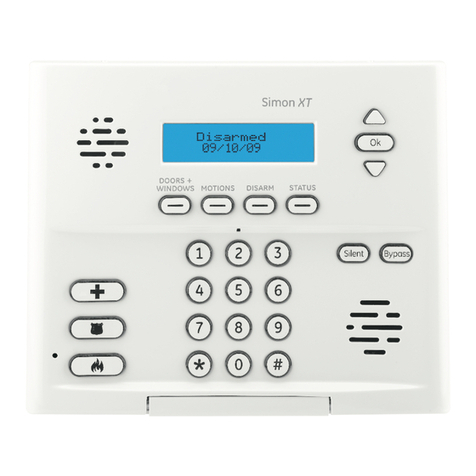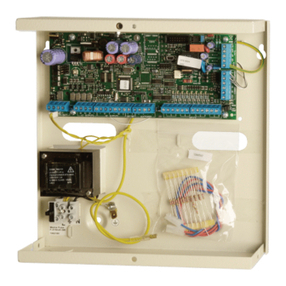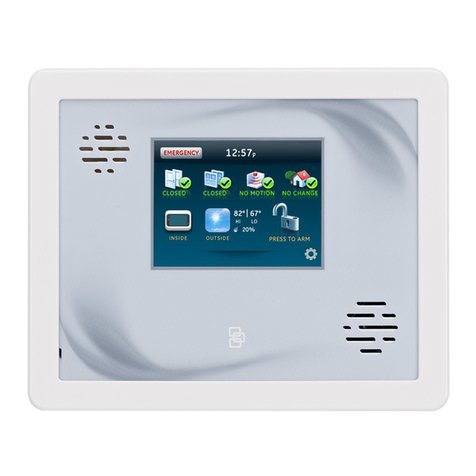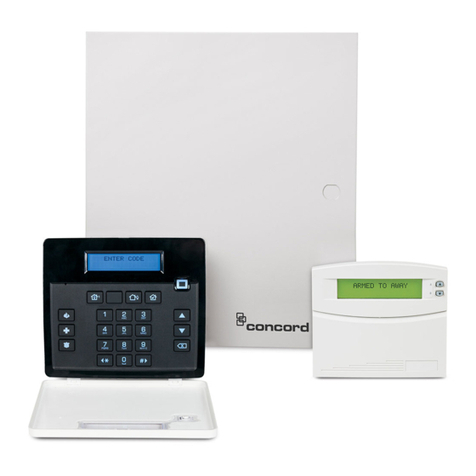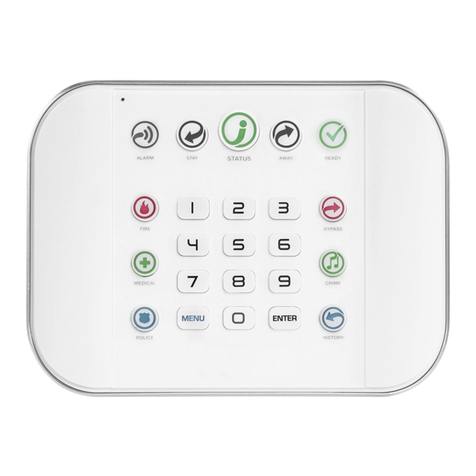
• Low battery condition will report at approximately 21VDC (24VDC output setting)
or approximately 10.5VDC (12VDC output setting).
• Battery presence detection will report approximately 5 minutes after battery remains
undetected (missing or removed).
Output Programming Selection Table:
Outputs must be programmed independently (OUT1 - OUT4)
Function Switch Positions Descriptions
ON OFF
Input to Output 1 2, 3 Output follows signal it receives from the corresponding input
Follower Mode (i.e. FACP Sync module - maintains synchronization of
notification appliance circuit.
2, 3 1 Disables Input to Output Follower Mode.
Temporal Code 3 3 1, 2 Enables Temporal Code 3 signal generation output.
Mode This mode will accept a steady or a pulsing input.
Steady Mode 1, 2, 3 A steady output signal will be generated. This mode
will accept steady or pulsing input.
March Time Mode 2, 3 1 Enables a March Time output which will sound 60 beats
(60 beats per minute) per minute. This mode will accept a steady or pulsing input.
For the above modes Dip Switch 4 determines which Input controls the corresponding output:
Switch 4 in the ON position causes output(s) to be controlled by input 1.
Switch 4 in the OFF position causes output(s) to be controlled by input 2.
Sync Mode Selection Table:
Amseco 1, 3, 4 2 This mode is designed to work with the Amseco
Sync Mode* series of horns, strobes, and horn/strobes to provide a means of syn-
(Fig. 1, 2, pg. 7) chronizing the Temporal-coded horns, synchronizing the flash timing
of the strobe, and silencing the horns of the horn/strobe combination
over a two-wire circuit while leaving strobes active.
Faraday 2, 4 1, 3 This mode is designed to work with the Faraday
Sync Mode* series of horns, strobes, and horn/strobes to provide a means of syn-
(Fig. 1, 2, pg. 7) chronizing the Temporal-coded horns, synchronizing the flash timing
of the strobe, and silencing the horns of the horn/strobe combination
over a two-wire circuit while leaving strobes active.
Gentex 1, 2, This mode is designed to work with the Gentex®Commander GES
Sync Mode* 3, 4 and ST/HS series of horns, strobes, and horn/strobes to provide a
(Fig. 1, 2, pg. 7) means of synchronizing the Temporal-coded horns, synchronizing the
Gentex is a registered flash timing of the strobe, and silencing the horns of the horn/strobe
trademark of Gentex Corporation. combination over a two-wire circuit while leaving strobes active.
System Sensor 1, 2, 4 3 This mode is designed to work with the SpectrAlertTM series of
Sync Mode* horns, strobes, and horn/strobes to provide a means of synchronizing
(Fig. 1, 2, pg. 7) the Temporal-coded horns, synchronizing the one-second flash timing
System Sensor is a registered of the strobe, and silencing the horns of the horn/strobe combination
trademark of Honeywell. over a two-wire circuit while leaving strobes active.
Note: The AL602ITI will only synchronize horns, horn strobes and strobes that contain synchronization capability.
Contact signal manufacturer for more detailed info. The same synchronization mode must be selected for all outputs.
* It is required to control visual notification appliances (strobes) via input 1 ( IN1) and audible notification
appliances (horns) via input 2 ( IN2). This allows audible notification appliances (horns) to be silenced while
visual notification appliances (strobes) continue to operate.
4
(AL600LGK Board)
Output Dip Switches
INPUT SELECT
TEMPORAL
STROBE SYNC
IN>OUT SYNC
